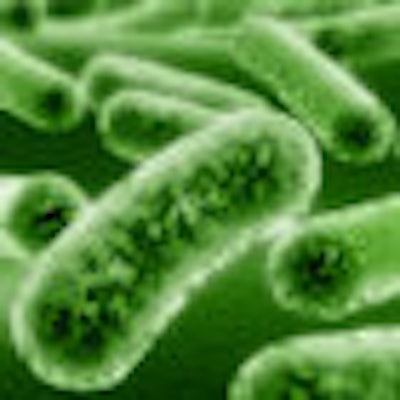
A recent comparison study found that a salivary culture of mutans streptococci (MS) alone was the most accurate means of assessing a child's risk for developing early childhood caries (ECC) among the methods tested (Journal of the American Dental Association, July 2012, Vol. 143:7, pp. 756-763).
However, a newer method using adenosine triphosphate (ATP)-driven bioluminescence measurements as a predictor for ECC that was not included in the study may be better.
"In their conclusions, MS is the best screening tool," Douglas Young, DDS, a caries prevention, detection, and management researcher at the University of the Pacific School of Dentistry, said in an interview with DrBicuspid.com. "At the time of the study, that probably would be true. Then the ATP study came out."
The ATP study Dr. Young referred to, published in 2010 in Pediatric Dentistry, found that ATP-driven bioluminescence may "potentially serve as an indirect assessment determinant of dental caries risk" (May/June 2010, Vol. 32:3, pp. 195-204). Researchers at from Oregon Health and Science University examined 33 pediatric patients between the ages of 7 and 12. They plated 150 oral specimens of plaque and stimulated saliva on enriched and selective agars to enumerate total bacteria and streptococci. The specimens were also subjected to ATP-driven bioluminescence determinations using a luciferase-based assay system, the researchers noted.
“Some believe that it's not so important that you identify mutans streptococci and lactobacilli.”
— Douglas Young, DDS, University of
the Pacific
Ultimately, they found that this approach could be used as an assessment tool for caries risk in children. "Our clinical data is consistent with the hypothesis that ATP measurements have a strong statistical association with bacterial number in plaque and saliva specimens, including numbers for oral streptococci," the researchers concluded. "The use of ATP-driven bioluminescence has broad implications in dentistry and medicine and can be used translationally in the clinic to determine the efficacy of interventional therapies."
The method is currently used in several California dental schools, Dr. Young noted, including Loma Linda University, the University of California San Francisco, and the University of the Pacific.
"They've adopted it in a clinical setting because it's easy to use," Dr. Young said. "It takes a minute to do versus the culture, which you have to culture for 48 to 72 hours. We tried that for years and used them in our clinics, but none of our students wanted to do them. With the ATP test, there is a swab, you put it in a machine, and a minute later you get a reading."
Ecological plaque hypothesis
So what should a caries risk assessment be testing for? "Some believe that it's not so important that you identify MS and lactobacilli (LB) because there are precursors to these organisms (which will be otherwise missed with culturing techniques) that are dangerous and contribute acid, and thus are also important to the problem of caries disease," Dr. Young explained.
For example, in a 1998 British study, Philip Marsh, BSc, PhD, and his collaborator wrote, "The observation that (a) the species most often implicated in caries (S. mutans and L. rhamnosus) were not selected until the pH was allowed to fall to low levels, and (b) that other saccharolytic species in the mixed-culture system (for example, S. oralis and S. gordonii) are capable of generating acid and thriving at pH values which will demineralize enamel is consistent with the proposal of a broader specificity in terms of the microbiology of caries" (Caries Research, November/December 1998, Vol. 32:6, pp. 456-462).
In short, Dr. Marsh's "ecological plaque hypothesis" suggests that inhibiting a particular bacteria is ineffective since environmental conditions are more relevant to the presence of caries. Consequently, there may be a better means for evaluating the risk of ECC than testing for MS.
"The connection to ATP is that ATP is nonspecific to any particular strain of bacteria," Dr. Young explained. "The ATP bioluminescence technology ... is looking for a biofilm that is actively producing ATP. If that biofilm is producing high levels of ATP, it is likely a caries pathogenic biofilm. The test will pick up both of the precursors to MS and LB (low pH and non-MS bacteria) as well as those types of bacteria, while MS-specific cultures will only pick up MS and LB that you're culturing for. Conceivably, you could do an MS culture and find that you have low MS and LB, and falsely assume that you're not susceptible to the disease. But Marsh's theory would say, 'No, that's not correct.' You have the precursors and the test missed those."
Dr. Young disclosed that his family trust owns some nonvoting shares of stock in Oral BioTech, the company that created the ATP test.



















